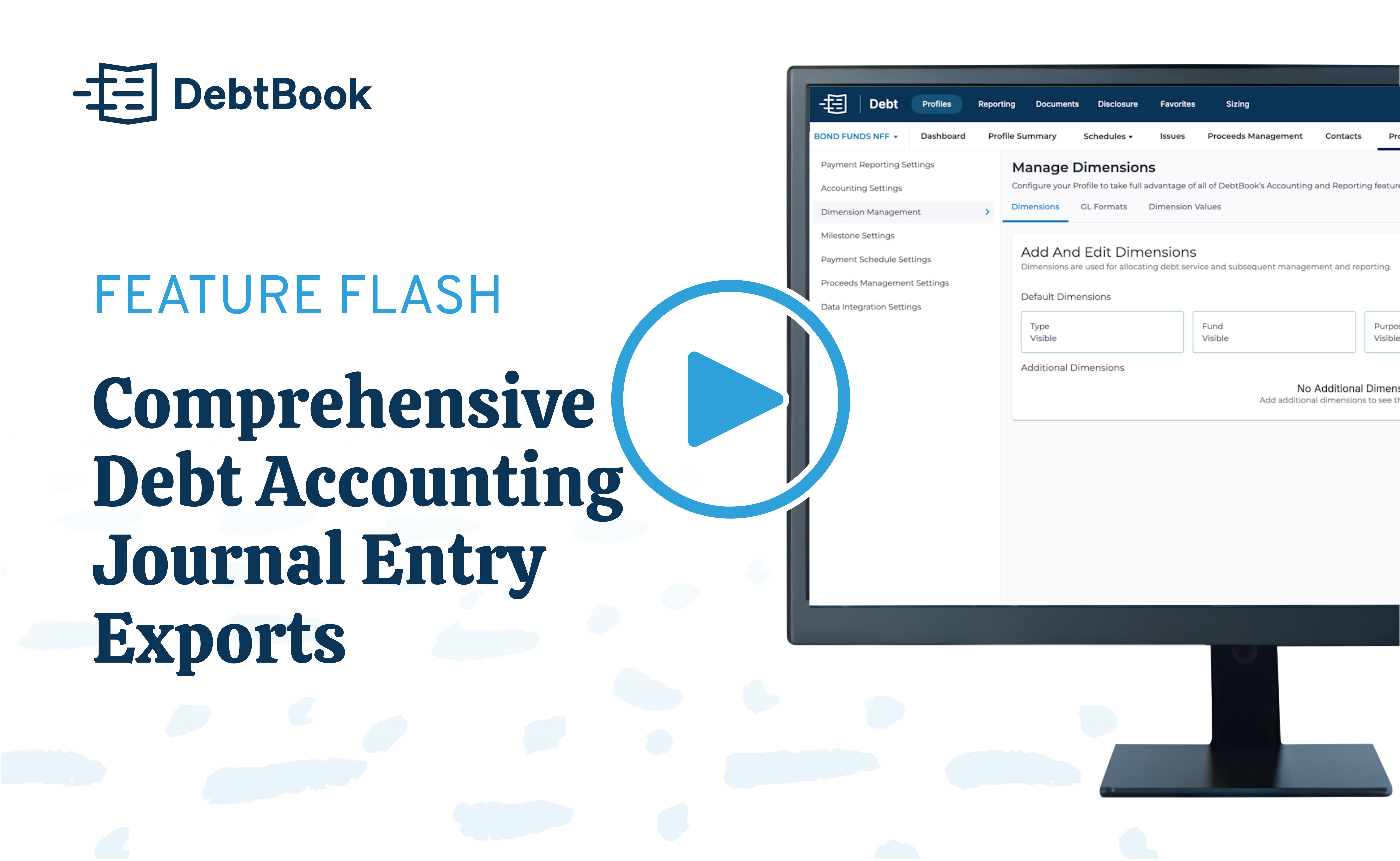Every month, detailed bank statements arrive that list every charge your organization incurs. Whether they come via computer or in your physical mailbox, they can be pages long and difficult to understand. So, how can your treasury team easily make sense of them?
As a treasurer, having a deep understanding of your account analysis statement is important for effective cash management, cost control, and overall financial transparency. The account analysis statement provides a comprehensive view of bank charges, balances, and interest earned, enabling treasurers to make informed decisions and optimize their banking relationships.
What is an Account Analysis Statement?
An account analysis statement is a detailed financial document provided by banks to their commercial customers, typically monthly. This statement serves as a comprehensive record of all the account activities, service charges, fees, and earnings credits (ECR) associated with the bank accounts held by the organization.
The primary purpose of the account analysis statement is to offer a transparent and itemized breakdown of the costs and benefits of the banking services used by the organization. By doing so, it enables organizations to monitor and manage their banking relationships more effectively, ensuring that they are receiving fair value for the services provided.
Importance for Treasurers and Financial Management
For treasurers, the account analysis statement is an invaluable tool for several reasons:
Cost Management
The account analysis statement details all service charges and fees incurred over the period, allowing treasurers to identify and scrutinize these costs.
By understanding these charges, treasurers can negotiate better terms with their banks or explore more cost-effective banking solutions.
Cash Flow Optimization
The statement provides insights into the organization's cash balances. It works as an invoice for the products and services being used on an organization's bank accounts and shows how the balances they're holding are being used to offset their fees.
This information is important for managing liquidity and ensuring that sufficient funds are available to meet the organization's financial obligations.
Earnings Credit Utilization
Many banks offer ECR based on the average balance maintained in the account. These credits can offset service charges, effectively reducing the net banking costs. The account analysis statement helps treasurers track these credits and optimize their usage.
Financial Transparency
Regular review of the account analysis statement ensures that all transactions are accurately recorded and accounted for. This practice enhances financial transparency and accountability within the organization.
Operational Efficiency
By analyzing the data in the account analysis statement, treasurers can identify and eliminate redundant services and find opportunities to transition from paper to electronic statements and payments, thereby improving overall financial efficiency.
Key Elements of the Account Analysis Statement
While each financial institution (FI) will format its account analysis statement, there will be some common elements:
Transaction Fees
Governments and nonprofits engage in a variety of financial transactions, from wires and checks to ACH transfers. Banks charge transaction fees based on the type and volume of these transactions.
Maintenance Fees
Banks will charge maintenance fees for account upkeep, banking portals, and other related services. These fees can vary and organizations need to assess whether they are getting value for the services provided.
Other Cash Management Services
Governments and nonprofits frequently leverage cash management services offered by banks. Fees associated with services such as lockbox processing, positive pay, prior and intraday reporting, and other value-add services, are outlined in the account analysis statement.
Account Analysis Statement Guide
Now let’s move on to each section of the account analysis statement. While each bank’s account analysis statement may vary, you’ll typically find the following:
Statement Information
The statement information is typically at the top of your document and shares all the information you need for the account and reporting period.
How to Read the Statement Section:
- Statement Month: The analysis period of the statement.
- Account Number/Group Account Number: The demand deposit account (DDA) number for this statement. For groups, the account number is designated to represent a group of accounts in a relationship.
- Production Date: Date that the statement was created.
Service Charges and Fees
This section details the various fees and charges incurred for the banking services used. These can include:
- Maintenance Fees: Monthly charges for account maintenance.
- Transaction Fees: Costs associated with specific transactions, such as wire transfers or check processing.
- Service Fees: Charges for additional services like implementation fees or fraud protection.
- Deposit Assessment Fee: Monthly charge that banks apply to the value of deposits to cover the costs of FDIC insurance, liquidity, and other regulatory costs.
How to Read the Service Charges and Fees Section:
- Product Line and Description: The name and categorization of the service utilized. Services are organized into product categories for easy identification and reporting.
- Bank Service Code: The number that designates the service used. The bank service can correspond to the AFP service code and usually varies bank to bank.
- AFP Service Code: A standardized code, often a six-character alphanumeric identifier, used across the banking industry to standardize the reporting of account analysis data.
- Unit Price ($): The price per unit of service.
- Volume: The quantity of transactions or units of service utilized during the statement period.
- Service Charge ($): The charge for each service. If a service is fee-based, the charges will display in this column and in the fee-based charges column.
- Balance Equivalent ($): The balance required to offset the service charges for the statement month. This calculation typically excludes fee-based charges.
- Fee-Based Charges ($): The service charges that cannot be offset by the earnings allowance.
- Subtotal: The aggregated totals for service charges and balance equivalents within each product category.
- Total Charge for Services: The total of all service charges for the statement month, including fee-based charges.
- Total Fee-Based Charges: The total of all fee-based service charges for the statement month.
- Balance Compensable Service Charges: The total of service charges that can be offset by the earnings allowance.
- Balance Equivalent Total Service Charges: The balance required to offset the statement month’s balance compensable service charges.
Balance & Compensation Analysis
This section provides information on different types of account balances, including:
- Collected Balance: The balance that has been collected and is available for withdrawal.
- Ledger Balance: The balance in the account according to the bank’s records, including pending transactions. Note: Interest or Earnings Credit is typically calculated using Collected balance, not Ledger balance.
- Negative Collected Balance: The sum of negative daily collected balances divided by the number of days in the statement period. A negative balance can be caused by uncollected funds or an overdraft.
Significance of each Balance Type for Cash Flow Management:
- Collected Balance: Crucial for understanding the actual available funds for operations.
-
Ledger Balance: Helps track the total amount in the account, including pending transactions.
How to Read the Balance & Compensation Section:
- Earnings Credit Rate: Interest-like benefit provided by banks on corporate deposit accounts. It's used to offset the fees for various banking services.
- Average Net Ledger Balance: The sum of the daily ending ledger balances (positive and negative) divided by the number of days in the statement month.
- Less Average Float Balance: The difference between the Average Net Ledger Balance and the Average Net Collected Balance.
- Average Net Collected Balance: The sum of the daily ending positive and negative collected balances for the month, divided by the number of days in the month. The average net ledger balance minus the average float balance.
- Average Negative Collected Balance: The sum of the daily ending negative collected balances, divided by the number of days in the statement month.
- Average Positive Collected Balance: The sum of the daily ending positive collected balances, divided by the number of days in the statement month.
- Less DDA Balance Reserve Requirement: The portion of the DDA balance that must be set aside by the bank to meet reserve requirements.
- Investable Balance: The balance on which the earnings allowance rate is applied.
- Balances Not Eligible for Earnings Allowance: The portion of the investable balance that does not receive earnings credit.
- Balances Eligible for Earnings Allowance: The portion of the investable balance that receives earnings credit.
- Balance Equivalent – Total Service Charges: The balance required to offset the current statement month’s balance compensable service charges.
- Excess/(Deficit) Investable Balance: The excess or deficit in balances remaining after the balances required to offset the current statement month’s balance compensable service charges have been deducted.
- Balance Compensable Service Charges: The total dollar amount of service charges that can be offset by the earnings allowance.
- Excess/(Deficit) Earnings Allowance: The difference between the earnings allowance and the balance compensable service charges.
- Service Charge Amount: The net charge (total service charge after offset of earnings allowance) which will be debited from the DDA you have specified.
Types of Discrepancies Found in an Account Analysis Statement
Incorrect Prices: Charges that do not match the negotiated pricing terms with the bank.
Unexpected/Irregular Volume: Reviewing volume for anomalies can point to new services added unexpectedly, fees that should've been waived, or fraudulent activity.
Duplicate Charges: Fees or transactions that appear more than once.
Tips for Resolving Common Issues
Reconcile Regularly: Match the account analysis statement with internal records frequently to catch discrepancies early.
Communicate with Your Bank: Address any discrepancies immediately with your bank's representative.
Maintain Documentation: Keep detailed records of all transactions and communications for reference.
Importance of Regular Reviews and Audits
Prevent Errors: Regular reviews help identify and correct errors promptly.
Ensure Accuracy: Consistent audits ensure that all transactions and charges are accurate.
Maintain Trust: Accurate records build trust with stakeholders and enhance financial integrity.
Strategies to Optimize Banking Relationships
Account analysis statements serve as the foundation for comprehensively understanding the range of services you engage with at your bank. By leveraging these statements, you can optimize your banking relationships and ensure you’re getting the most value.
Some strategies for optimizing banking relationships include:
Transaction Review
A good strategy to start out with is regularly reviewing transaction types and volumes to identify opportunities for cost savings and efficiency improvements.
Understanding this breakdown is important for organizations to optimize their banking activities and identify accounts that may be exposed to fraud, idle, seeing an unusual change in activity, or even help prepare for a Request for Proposal (RFP).
Negotiate Fees
If you want to secure favorable fee structures or be well prepared for pricing negotiations in an RFP, engage in proactive negotiations with your banks. Establishing transparent communications is key to strong bank relationship management.
This includes creating formal pricing contracts that will lock in pricing for years at a time, allowing treasury teams to have a better idea of monthly bank fees as part of long-term forecasting.
Benchmarking Fees
If you’re an organization with multiple banking partners, actively reviewing fees can help compare fees across financial institutions to ensure rates are similar. Cash management technology, like DebtBook offers, can assist with this as statements do not line up across different financial institutions and each statement can be a dozen or more pages.
Balance Optimization
When you actively manage your account balances you can maximize ECR and minimize net banking fees. This could mean moving funds into an account to ensure fees are fully offset or moving fees held beyond the level necessary to fully offset into higher yield investments.
Easily Manage Your Account Analysis Statement with DebtBook
DebtBook is purpose-built for government and nonprofit treasury teams, providing comprehensive tools to power the efficient management of cash flow and liquidity.
Our Bank Fee Analysis feature, part of our Cash Management solution, allows treasury teams to better understand the fees they are being charged, identify any discrepancies, and ensure balances are being held efficiently to offset fees without excess balances earning zero interest.
The result? During preliminary testing, we helped identify millions of dollars of idle cash that, when invested, could be earning between $200K to $2M on average in interest revenue on an annual basis.
(The on average $200K-$2M per annum calculation is based upon average excess balances identified in operating accounts that could be invested through a daily liquid money market fund returning 5% APY.)
Reach out for a demo today to see how DebtBook can help you unlock strategic cash management.
Explore DebtBook's Bank Fee Analysis feature in our 2-minute Feature Flash!
Related Cash Management Reading
- Bank Fee Management: Challenges & Insights for Treasury Teams
- Common Bank Reporting & Payment File Formats for Treasury
- [FREE DOWNLOAD] Cash Position Worksheet for Treasury
Disclaimer: DebtBook does not provide professional services or advice. DebtBook has prepared these materials for general informational and educational purposes, which means we have not tailored the information to your specific circumstances. Please consult your professional advisors before taking action based on any information in these materials. Any use of this information is solely at your own risk.







